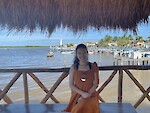Transdisciplinary Research: Champion Approach to Achieve Sustainability?
Yanyu Wang ·“Transdisciplinary research is an approach to understanding and solving societal problems by bringing together different knowledge streams.”
-Caroline Adler
Last week our MEES 620 class discussed the last but not least approach: transdisciplinary approaches1. During the class, we also had an exercise by positioning ourselves on the undisciplinary compass adapted from Haider et al. (2017) and realized the limitation of the compass pointed out by Dr. Rose4. Before we dive into the following content, let us refresh the meaning of transdisciplinary research by reading the quote above and noticing that transdisciplinary research is problem-oriented by integrating perspectives from different disciplines. When it comes to sustainability science, complex environmental issues augment the collaboration needs across disciplines to synthesize knowledge and inform solutions for sustainable management5. Currently, it is very exciting to see the emergence of boundary organizations, which provides an excellent platform for conducting interdisciplinary research, so what does boundary organization mean? A boundary organization is an organization that could promote collaboration and knowledge flow among various disciplines as well as the research and public policy community7. The National Socio-Environmental Synthesis Center (SESYNC) is a great example of boundary organization by bringing natural scientific knowledge with human behavior and decision-making to solve environmental issues7. However, it is not that easy to establish these boundary organizations without a large number of investments put in and a team with a combination of unique skills.

Collaborating with non-academic stakeholders, as the core of transdisciplinary research, is critical to achieving sustainability8. Stakeholders refer to the group of people with different expertise in a research question who both are interested and impacted by this particular issue2. Acknowledging the significance and valuable inputs from stakeholders is the premise of co-production. Taken from my research project as an example, during the early development of models constructing N flows in crop and livestock systems, involving stakeholders representing different perspectives in N management, such as farmers, agency, academic, private sector/industry could help us better target possible socioeconomic and ecological drivers with nitrogen use efficiency (NUE) and better improve the model. However, we have to admit that academic scientists and non-academic stakeholders are not used to working together so there are some big gaps that we need to overcome3. The valley of wasted knowledge is described as a place where the most recent sustainability research never got to the hands of practitioners and also ideas generated from practitioners never researched by academics, resulting from different languages and purposes from two sides3. So, how can we bridge the gap between academics and practitioners?


Irwin et al. (2018) pointed out that the legacy reward system is the essential mismatch hindering the development of transdisciplinary research5. That means researchers are still rewarded based on the number of papers and grants that they lead, which are considered as their achievements at the personal level under disciplinary-based contexts5. However, sustainability science needs collaboration across disciplines to integrate knowledge and move beyond the disciplinary boundary. Some suggestions are put forward to solve this mismatch. For example, non-academic products, such as sustainable development plans for local communities, should also be considered as important research outcomes produced from transdisciplinary work5. Moreover, during the promotion process, acknowledging collaborative contribution by obtaining inputs from non-academic stakeholders is also critical in incentivizing transdisciplinary work5. Another possibility is to involve practitioners in the proposal review process to guarantee the funding goes to the collaboration work addressing the particular issue with practical significance5.
From above, we keep emphasizing the importance and highlighting some potential solutions for promoting transdisciplinary research, but please don’t forget that disciplinary-based research is also inseparable from achieving sustainability. Recall from one of the readings by Haider et al. (2017), researchers created an undisciplinary compass for helping readers reflect their current position in the research process, the upper right quadrant is advocated as the ultimate goal for conducting rigorous sustainability science successfully4. However, connecting with our class discussion, there is no so-called good or bad in the four quadrants here, and we do need experts from different trained research backgrounds. For example, in the development of evaluating the climate mitigation capacity of innovative agricultural management practices such as cover crop, we do need to have researchers who belong to the “disciplinary immersion” quadrant, specializing in soil microbiology in understanding the impacts of below-ground mechanisms on the above-ground greenhouse gas (GHG) emissions6.

In all, promoting conversation and cooperation from different perspectives such as academia, stakeholders, and communities can help generate creative approaches in addressing environmental issues jointly by transcending the disciplinary boundary. But as we mentioned earlier, highlighting the significance of transdisciplinary studies is not to discount the necessity and importance of disciplinary-based research, the key is to narrow the gap between research findings provided by the academic side and practical solutions indicated from findings.
References:
- Dennison, B. (2018, September 5). New Environment & Society course launched. Retrieved from https://ian.umces.edu/blog/new-environment-society-course-launched/
- Effect of Sustainability on Stakeholders. (2021, May 18). Retrieved from https://smallbusiness.chron.com/effect-sustainability-stakeholders-35892.html
- Global Institute of Sustainability and Innovation. Bridging the Valley of Wasted Knowledge. Retrieved from https://www.youtube.com/watch?v=0rlWEyadz4I
- Haider, L.J., Hentati-Sundberg, J., Giusti, M. et al. (2018). The undisciplinary journey: early-career perspectives in sustainability science. Sustain Sci, 13, 191–204. https://doi.org/10.1007/s11625-017-0445-1
- Irwin, E.G., Culligan, P.J., Fischer-Kowalski, M. et al. (2018). Bridging barriers to advance global sustainability. Nat Sustain, 1, 324–326. https://doi.org/10.1038/s41893-018-0085-1
- Lameiras, M.M. (2021, November 11). CAES combines research and Extension efforts to develop climate solutions. Retrieved from https://newswire.caes.uga.edu/story/8793/changing-world.html
- SESYNC About. Retrieved from https://www.sesync.org/about
- Who: Stakeholder Engagement? Retrieved from https://www.uu.nl/en/research/transdisciplinary-field-guide/in-practice/who-stakeholder-engagement
About the author
Yanyu Wang

Yanyu Wang is a first-year PhD student in the Environment & Society Foundation of the MEES program at Appalachian Laboratory in Frostburg. Her current research focuses on sustainable nitrogen management through the interactions between agriculture production and sustainable Food-Energy-Water nexus with data-driven approaches.
Next Post > Bringing Communities Together Through Water: The Start of Socio-Environmental Report Cards for the Southeast Michigan region
Comments
-
Shuyu Jin 4 years ago
Hi Yanyu!
Thanks for sharing this terrific blog, particularly your own research experience with collaborating with different background stakeholders. As you pointed out, sometimes we have to admit there is still a big gap between those groups. The more we appraise the pros of the transdisciplinary, sometimes, the more we obtain the disappointments from it. A reasonable attempt is still the way to figure out valuable solutions, and what counts is that practicing skills with negotiation and cooperation. -
Barry Bowman 4 years ago
Great job Yanyu!
You expertly summarized the key points from our class discussion. I appreciate how you presented multiple perspectives for the transdisciplinary approach.
I agree that the traditional way of incentivizing research is a barrier to transdisciplinary research. Many researchers are involved with extracurricular duties, such as advisory boards, that could be factored into the decisions for awarding tenure. -
Bill Dennison 4 years ago
Yanyu, I like the way you related the transdisciplinary topic and readings to your research on sustainable agriculture. The graphics that you selected are quite compelling--I especially like Dunk's interdisciplinary graphic. The concept of the valley of wasted knowledge resonated with me, and the video link was worth watching. The link to the transdisciplinary field guide reminds me that Europeans are actively promoting transdisciplinary research approaches. I also liked that you advocated for more boundary organizations as a way to achieve more transdisciplinary research. Overall, I felt that the class essays, class discussion and your blog were a great to cap off the mental yoga that we have experienced this semester. Good job.
-
Nick Dawson 4 years ago
Yanyu, great job on the final blog post!!! I actually never heard of the National Socio-Environmental Synthesis Center. Thank you for using that as an example and talking about boundary organizations. Now only if NOAA could follow suit haha. But in all seriousness, your blog synthesized the main points we have discussed in class. I actually had a meeting on Monday, where NOAA was looking at transdisciplinary approaches in regards to offshore wind farms as an alternative to mitigate climate change.
-
Jana Hana Kopelent-Rehak 4 years ago
Yanyu, I enjoyed reading and seeing your blog, made me think about research styles and how individual it is in today's context. I think one big change in research in the 21st century is that we agree on authentic ways of doing our work. we do have much greater freedom today, in US especially, to put it in yoga term authentic research which means for some people experimental work in collaboratives sense. Just in Anthropology, we have so many subfields now, that on different levels anthros engage with others differently. But as I said in class, Applied or Public Anthropology is a subfield where you can see how we can successfully apply our methods in collaborative problem-solving projects.
-
Nicole Holmes 4 years ago
Yanyu!
I loved seeing how everyone made their blog connect personally throughout the semester, and yours was no exception. I have a much better understanding of how you would like to implement your project, and love how you show your deep interest for both stakeholder involvement and VERY disciplinary science. This is the future, and you displayed that wonderfully so, with no lack of acknowledgement to its challenges. I'm looking forward to seeing your work develop overtime, and will be cheering you on.
Best,
Nicole
-
Matt Kusche 4 years ago
Hello Yanyu!
Wonderful job on formulating and putting together a blog for transdisciplinary approaches. I really like how you tie in not only your research, but also some challenges that currently exist within academia that may inhibit transdisciplinary work. I specifically really like your discussion on the promotion process and how professors are expected to put out a certain number of publications within their field, and how this can be preventative to utilizing transdisciplinary approaches. I never thought about this until this semester but it certainly can be challenging given the requirements set forth in regard to promotion. I really enjoy how you explore this and even offer up ideas on how academia can adjust to better encourage transdisciplinary approaches. Overall, wonderful job!